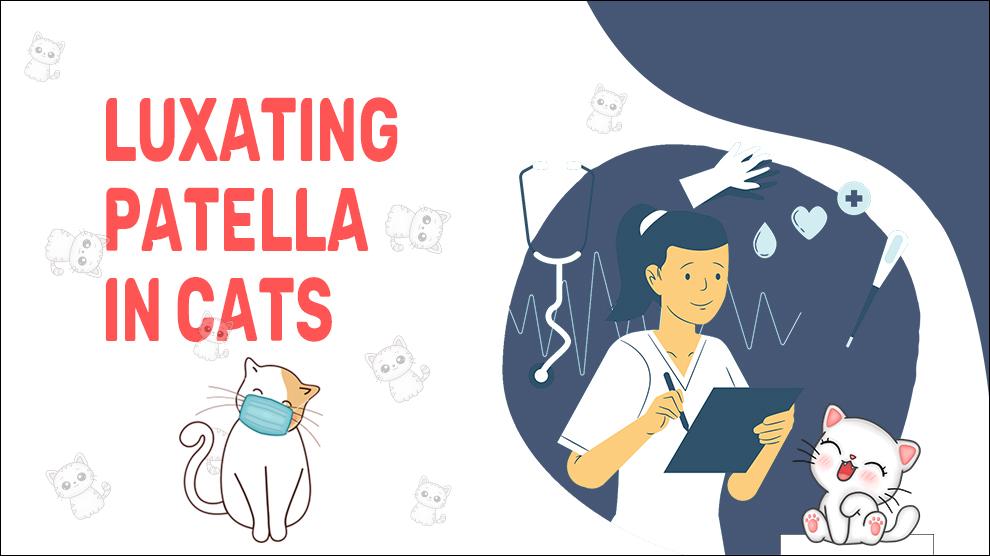What Is Luxating Patella In Cats?
Luxating patella, also known as kneecap dislocation, is a common orthopedic condition in cats. It occurs when the patella (kneecap) slips out of its normal position and moves to the side of the joint.
This condition can cause discomfort and even lead to lameness in cats.
Clinical Signs Of Luxating Patella In Cats
The symptoms of the luxating patella in cats can vary depending on the severity of the condition.
Some common symptoms include:
- Limping: Cats with a luxating patella may limp on one or both hind legs. They may also carry their legs in an unusual way.
- Lameness: This condition can cause cats to become lame, especially after exercise or physical activity.
- Difficulty jumping: Cats with a dislocated kneecap may have difficulty jumping or climbing stairs.
- Pain: Luxating patella can cause pain in the affected leg, and cats may resist being touched or picked up.
- Swelling: In some cases, there may be swelling around the affected joint.
- Holding Up Back Leg
- Difficulty Getting Up
- Difficulty Walking
Treatment Options For Luxating Patella In Cats
Treatment for luxating patella in cats depends on the severity of the condition. Mild cases may not require any treatment, while more severe cases may require surgery or other interventions.
Some common treatments include:
- Medications: Anti-inflammatory medications, such as NSAIDs, can help reduce pain and inflammation in the affected joint.
- Weight management: Maintaining a healthy weight can help reduce the risk of developing luxating patella and can also help manage symptoms in cats who already have the condition.
- Surgery: In severe cases, surgery may be necessary to realign the kneecap and repair any damage to the joint.
- Physical therapy: Physical therapy can help improve joint function and reduce pain and inflammation.
Home Remedies For Luxating Patella In Cats
There are a few home remedies that can help alleviate the symptoms of Luxating Patella in cats.
Gentle massage and stretching of the affected leg can help improve blood flow and loosen up the muscles around the knee joint.
Providing a soft and comfortable surface for your cat to rest on can also help ease the discomfort associated with this condition.
Additionally, keeping your cat at a healthy weight can reduce the pressure on the knee joint and minimize the risk of complications.
How To Prevent Luxating Patella In Cats?
Preventing luxating patella in cats involves maintaining a healthy weight and avoiding excessive exercise.
Regular exercise is important for maintaining joint health, but too much exercise can increase the risk of injury.
Providing a well-balanced diet and ensuring that cats get regular exercise can help prevent the development of this condition.
Affected Cat Breeds Of Luxating Patella
Luxating Patella is more common in certain breeds such as Devon Rex, Abyssinian, Cornish Rex, Siamese, and Burmese cats. However, any breed of cat can be affected by this condition.
Causes For Luxating Patella In Cats
Causes:
Luxating patella in cats can be caused by genetic factors or injuries. Some cats are born with abnormal kneecap anatomy, which can increase the risk of developing this condition.
Other cats may develop luxating patella as a result of trauma, such as a fall or other injury. In some cases, the condition may also be associated with obesity or overuse of the joint.
When To See A Vet For Luxating Patella In Cats?
If you suspect that your cat may have luxating patella, it is important to see a veterinarian. A veterinarian can perform a physical examination and recommend appropriate treatment options.
If left untreated, this condition can lead to chronic pain and lameness, so it is important to seek prompt medical attention if you suspect that your cat may be affected.
Food Suggestions For Luxating Patella In Cats
Feeding your cat a healthy and balanced diet is important for maintaining overall health and preventing obesity, which can exacerbate Luxating Patella symptoms.
Choose high-quality cat food that is formulated for your cat's age, weight, and activity level. Look for foods that are rich in protein and low in carbohydrates.
Additionally, you may want to consider adding joint supplements to your cat's diet, such as glucosamine and chondroitin, which can help support joint health.
Conclusion
Luxating Patella is a common condition in cats, particularly in certain breeds.
While it can cause discomfort and difficulty in movement, it is generally not life-threatening and can be managed through various treatments, including surgery, medication, and physical therapy.
If you suspect that your cat may have Luxating Patella, it is important to consult with your veterinarian for an accurate diagnosis and appropriate treatment plan.
Additionally, providing a comfortable living environment and a healthy diet can help minimize the risk of complications and improve your cat's quality of life.











